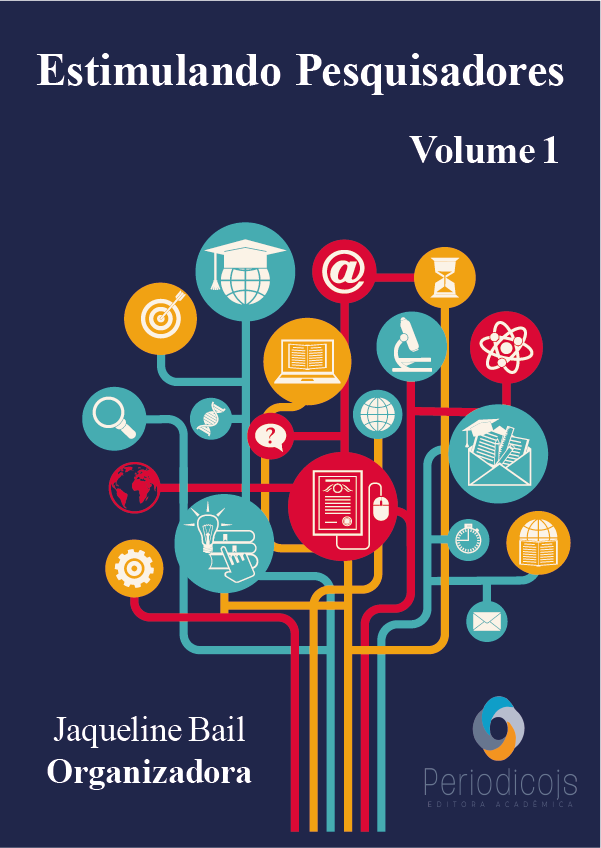Resumo
O processo de cicatrização de feridas é um evento complexo e dinâmico que é desencadeado perante a existência de um tecido lesionado. As lesões cutâneas crônicas, em especial as que acometem pacientes com comorbidades, são um dos maiores exemplos da fase de estagnação da inflamação e que levam a problemas de cicatrização. Umas das alternativas mais modernas e recentes no campo da engenharia de tecidos que visa propor novas alternativas para o tratamento de cicatrização de feridas é a nanotecnologia. Destarte, o presente estudo teve como objetivo realizar uma revisão integrativa da literatura a fim de relacionar os estudos mais recentes e relevantes acerca das últimas inovações no campo do tratamento de cicatrização de feridas que fazem uso de sistemas nanoestruturas a base de ativos derivados da Aloe vera. Para isto, foram realizadas pesquisas nas bases de dados Science Direct e Pubmed para busca dos artigos relacionados a temática proposta. A amostra final foi constituída por 12 artigos científicos, de acordo com critérios previamente estabelecidos. Foram analisados diversos estudos experimentais envolvendo modelos nanoestruturados em associação a Aloe vera e outros ativos, onde os mesmos apresentaram resultados positivos frente à possibilidade de aplicação. Desta forma, concluiu-se que apesar dos resultados positivos obtidos, ainda é necessária a realização de novos estudos clínicos controlados que sustentem e comprovem a real efetividade desses curativos.
Referências
BIALIK-WĄS, Katarzyna et al. Advanced SA/PVA-based hydrogel matrices with prolonged release of Aloe vera as promising wound dressings. Materials Science and Engineering: C, v. 120, p. 111667, 2021.
BOOTDEE, Kittima; NITHITANAKUL, Manit. Poly (d, l-lactide-co-glycolide) nanospheres within composite poly (vinyl alcohol)/aloe vera electrospun nanofiber as a novel wound dressing for controlled release of drug. International Journal of Polymeric Materials and Polymeric Biomaterials, v. 70, n. 4, p. 223-230, 2021.
CHEN, Honglei et al. A novel wound dressing based on a Konjac glucomannan/silver nanoparticle composite sponge effectively kills bacteria and accelerates wound healing. Carbohydrate polymers, v. 183, p. 70-80, 2018.
DEBJIT, Bhowmik et al. Aloe vera-gift to mankind. International Journal of Minor Fruits, Medicinal and Aromatic Plants, v. 5, n. 1, p. 1-6, 2019.
GARCIA-ORUE, Itxaso et al. Composite nanofibrous membranes of PLGA/Aloe vera containing lipid nanoparticles for wound dressing applications. International journal of pharmaceutics, v. 556, p. 320-329, 2019.
LOZOYA-AGULLO, Isabel et al. Segmental-dependent permeability throughout the small intestine following oral drug administration: Single-pass vs. Doluisio approach to in-situ rat perfusion. International journal of pharmaceutics, v. 515, n. 1-2, p. 201-208, 2016.
ZADEH GHARABOGHAZ, Morteza Najaf; FARAHPOUR, Mohammad Reza; SAGHAIE, Shahram. Topical co-administration of Teucrium polium hydroethanolic extract and Aloe vera gel triggered wound healing by accelerating cell proliferation in diabetic mouse model. Biomedicine & Pharmacotherapy, v. 127, p. 110189, 2020.
GHAYEMPOUR, Soraya; MONTAZER, Majid; RAD, Mahnaz Mahmoudi. Encapsulation of Aloe Vera extract into natural Tragacanth Gum as a novel green wound healing product. International journal of biological macromolecules, v. 93, p. 344-349, 2016.
GIANINO, Elizabeth; MILLER, Craig; GILMORE, Jordon. Smart wound dressings for diabetic chronic wounds. Bioengineering, v. 5, n. 3, p. 51, 2018.
HAN, George; CEILLEY, Roger. Chronic wound healing: a review of current management and treatments. Advances in therapy, v. 34, n. 3, p. 599-610, 2017.
JECKSON, Tracey Anastacia et al. Delivery of therapeutics from layer-by-layer electrospun nanofiber matrix for wound healing: An update. Journal of Pharmaceutical Sciences, 2020.
KHERADVAR, Shadi Alsadat et al. Starch nanoparticle as a vitamin E-TPGS carrier loaded in silk fibroin-poly (vinyl alcohol)-Aloe vera nanofibrous dressing. Colloids and Surfaces B: Biointerfaces, v. 166, p. 9-16, 2018.
MAAN, Abid Aslam et al. The therapeutic properties and applications of Aloe vera: A review. Journal of Herbal Medicine, v. 12, p. 1-10, 2018.
ORYAN, Ahmad et al. Healing potential of injectable Aloe vera hydrogel loaded by adipose-derived stem cell in skin tissue-engineering in a rat burn wound model. Cell and tissue research, v. 377, n. 2, p. 215-227, 2019.
RUBIO-ELIZALDE, Itzel et al. Scaffolds based on alginate-PEG methyl ether methacrylate-Moringa oleifera-Aloe vera for wound healing applications. Carbohydrate polymers, v. 206, p. 455-467, 2019.
SHAHBUDDIN, Munira et al. Glucomannan-poly (N-vinyl pyrrolidinone) bicomponent hydrogels for wound healing. Journal of Materials Chemistry B, v. 2, n. 6, p. 727-738, 2014.
SHI, Xiao-Dan et al. Structural and conformational characterization of linear O-acetyl-glucomannan purified from gel of Aloe barbadensis Miller. International journal of biological macromolecules, v. 120, p. 2373-2380, 2018.
SORG, Heiko et al. Skin wound healing: an update on the current knowledge and concepts. European Surgical Research, v. 58, n. 1-2, p. 81-94, 2017.
YANG, Bo et al. Konjac glucomannan/polyvinyl alcohol nanofibers with enhanced skin healing properties by improving fibrinogen adsorption. Materials Science and Engineering: C, v. 110, p. 110718, 2020.
ZAHEDI, Elahe et al. Fabrication and characterization of core-shell electrospun fibrous mats containing medicinal herbs for wound healing and skin tissue engineering. Marine drugs, v. 17, n. 1, p. 27, 2019.

